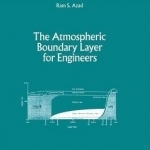The Atmospheric Boundary Layer for Engineers
BookThis item doesn’t have any media yet
2012 | Natural World
While I was participating in the IUTAM Symposium on Structure of Turbulence and Drag Reduction in Zurich, Switzerland, in 1989, I was approached by Prof. Dr. Themistocles Dracos to give a course oflectures on the Atmospheric Boundary Layer during my sabbatical leave at Eidgenossische Technische Hochschule (ETH) Zurich - Hoenggerberg in 1991. His reason for the suggestion was the growing interest in the environment and its dynamics created by flow in the Atmospheric Boundary Layer. I have been teaching boundary layer to undergraduate and graduate students for more than twenty five years, so I agreed to give a series of lectures on boundary layer of the atmosphere. From the start I thought very seriously about the problem and consulted all the published works in English on the Atmospheric Boundary Layer (ABL). First consider the topography of the Earth which has oceans calm and turbulent, mountain ranges of height up to 9 km, lands of variable height with forests, food growing vegetable and deserts. The shape of the Earth is nearly spherical except at the north and south poles.
Sun supplies the energy to drive circulation of air around the Earth's atmosphere which for all practical purposes occupies the region up to about 10 to 11 km. This brief scenerio of Earth's topography reveals the complexity of flow very close to the Earth's surface that is hardly flat except at the oceans' surface which consists of about 70% of the total Earth's surface.
Related Items:
| Published by | Springer |
| Edition | Unknown |
| ISBN | 9789401047852 |
| Language | N/A |
Images And Data Courtesy Of: Springer.
This content (including text, images, videos and other media) is published and used in accordance
with Fair Use.
